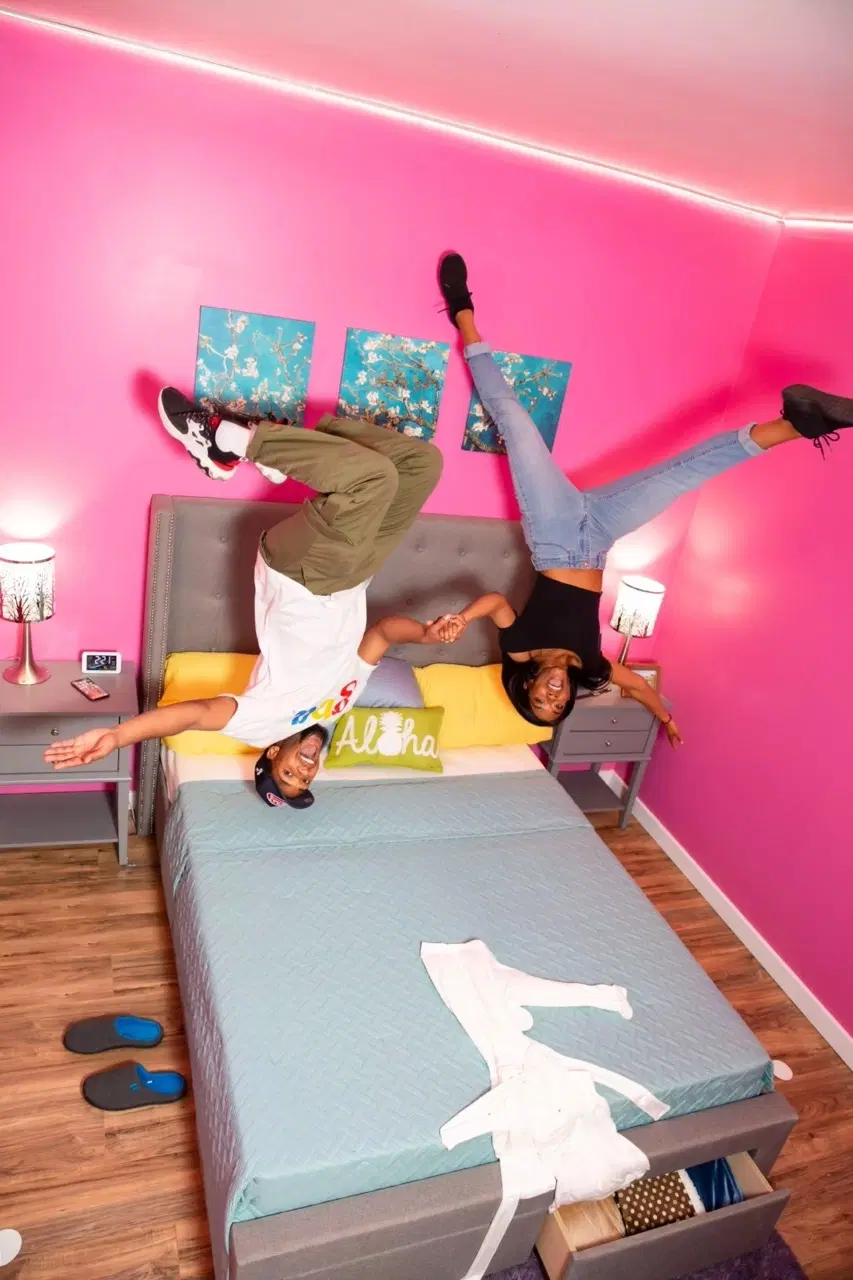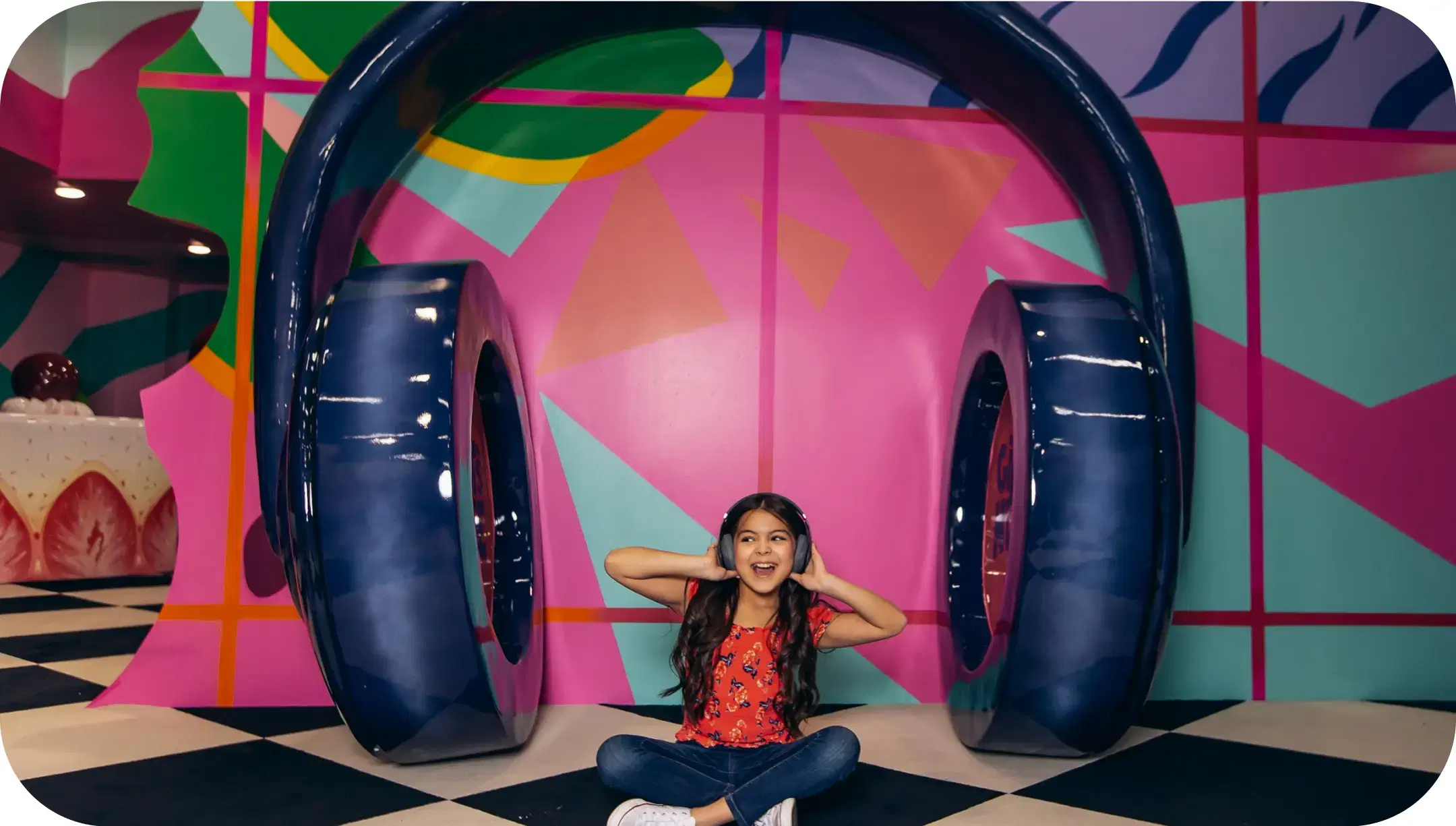Towering over Los Angeles’ Vine Street, the Capitol Records Building’s stacked-records design is an unmistakable symbol of Hollywood’s enduring influence on the global music industry. Completed in April 1956, this 13-story tower was the world’s first circular office building, showcasing innovative architectural prowess. Designed by Louis Naidorf of Welton Becket Associates, the building’s distinctive appearance has made it a landmark in the Los Angeles skyline.
The building’s wide, curved awnings over each window and the tall spire emerging from its top contribute to its resemblance to a stack of records on a turntable. This design was not initially intended to mimic records; however, it has become a celebrated symbol of the music industry. The Capitol Records Building stands as a testament to mid-century modern architecture and continues to draw admiration from visitors and locals alike.
Located at 1750 Vine Street in Hollywood, the Capitol Records Building is situated near the intersection of Hollywood and Vine. This prime location places it in the heart of Los Angeles’ entertainment district, making it easily accessible to those exploring the city’s rich musical heritage. Its proximity to other notable landmarks further cements its status as a must-see attraction for visitors.
Historical Background and Location
The Capitol Records Building was constructed shortly after British music company EMI acquired Capitol Records in 1955. The building was completed in April 1956, consolidating Capitol Records’ West Coast operations under one roof. Its establishment marked a significant milestone in the growth of the music industry in Los Angeles.
Situated just north of the Hollywood and Vine intersection, the building’s location has been integral to its identity. This area has long been associated with the entertainment industry, and the Capitol Records Building’s presence has only enhanced its cultural significance. Visitors to the building can easily explore other nearby attractions, including the Hollywood Walk of Fame and the Pantages Theatre.
Over the years, the Capitol Records Building has become an enduring symbol of Hollywood’s musical legacy. Its iconic design and prime location have made it a focal point for music enthusiasts and tourists seeking to experience the rich history of Los Angeles’ entertainment scene.
Capitol Studios and Musical Legacy
Housed within the Capitol Records Building are the renowned Capitol Studios, which have played a pivotal role in shaping the music industry. These state-of-the-art recording facilities have attracted numerous legendary artists since their inception. The studios are equipped with cutting-edge technology, ensuring high-quality sound production for a diverse range of musical genres.
One of the most notable features of Capitol Studios is the set of subterranean echo chambers designed by the legendary guitarist Les Paul. These chambers, located 30 feet underground, provide unique acoustic properties that have been utilized in countless recordings. Artists such as Frank Sinatra, Nat King Cole, and The Beach Boys have all recorded iconic tracks within these studios, contributing to the building’s storied musical legacy.
The Capitol Records Building continues to serve as a hub for musical creativity and innovation. Its studios remain in high demand among contemporary artists, preserving the building’s status as a cornerstone of the Los Angeles music scene. Visitors and music enthusiasts often regard the building as a monument to the rich history of recorded music.
Notable Features and Attractions
Atop the Capitol Records Building sits a distinctive spire, crowned by a red light that continuously blinks the word “Hollywood” in Morse code. This feature, operational since the building’s opening in 1956, was the brainchild of then-president Alan Livingston, aiming to subtly advertise Capitol’s West Coast presence. The beacon has become a beloved aspect of the Los Angeles skyline, symbolizing the city’s deep-rooted connection to the entertainment industry.
Another remarkable feature is the “Hollywood Jazz: 1945-1972” mural, created by artist Richard Wyatt Jr. Located on the building’s south wall, this vibrant mural spans 26 by 88 feet and showcases larger-than-life images of legendary jazz musicians, including Chet Baker, Charlie Parker, and Ella Fitzgerald. Restored in 2011 with hand-glazed ceramic tiles, the mural celebrates the rich history of jazz in Los Angeles and serves as a visual testament to the city’s cultural heritage.
Visitors to the Capitol Records Building in Los Angeles can also appreciate its mid-century modern architectural design, which has stood the test of time. While the building itself is not open for public tours, its exterior and the surrounding area offer plenty for visitors to explore. The bustling intersection of Hollywood and Vine is a lively spot, with its proximity to other attractions like the Hollywood Walk of Fame and the Hollywood Pantages Theatre.
Nearby Attraction: World of Illusions
Just a short walk from the Capitol Records Building, at 6751 Hollywood Blvd, lies the World of Illusions, a captivating Los Angeles attraction that offers visitors an interactive and immersive experience. This museum features over 30 exhibits designed to challenge perception and ignite the imagination, making it a perfect complement to the rich musical history found at the Capitol Records Building.
One of the standout exhibits is the Upside Down House, a whimsical installation where visitors can navigate through seven uniquely designed rooms that defy gravity. From an inverted kitchen to a flipped living room, this exhibit provides countless photo opportunities and a fun-filled experience for all ages. The playful nature of the Upside Down House offers a delightful contrast to the historic ambiance of the nearby Capitol Records Building.
Another popular attraction within the World of Illusions is the Giant’s House, where guests can explore a world where everyday objects are larger than life. This exhibit offers a unique perspective, allowing visitors to feel as though they’ve shrunk in size. Additionally, the Museum of Illusions presents a series of mind-bending 3D artworks that create stunning visual effects, perfect for immersive photography. For those looking to release some energy, the Smash It exhibit provides a safe space to break objects, offering a therapeutic and entertaining experience.
What makes the Capitol Records Building unique?
The Capitol Records Building is an architectural marvel in Los Angeles, designed to resemble a stack of vinyl records. Its iconic structure, combined with its rich musical history, has made it one of Hollywood’s most recognizable landmarks. Visitors admire its innovative design and its deep connection to the music industry.
Can visitors enter the Capitol Records Building?
While the Capitol Records Building is not open for public tours, visitors can explore its exterior and the surrounding area. Located in Los Angeles, it is near many famous attractions, including the Hollywood Walk of Fame. For those looking for an interactive experience, the World of Illusions is just a short walk away.
What other attractions are near the Capitol Records Building?
Situated in Hollywood, the Capitol Records Building is close to several exciting destinations. Visitors can check out the Hollywood Pantages Theatre, explore the Walk of Fame, or enjoy immersive exhibits at the World of Illusions. Los Angeles offers a variety of entertainment options, making the area a great place to explore.







